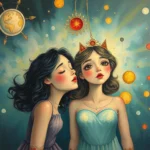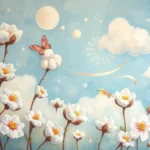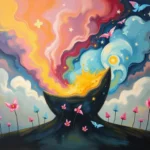
Have you ever woken up from a dream, your heart racing, and thought, “What on earth did that mean?” Dreams can be puzzling; they sometimes feel like fragments of an unfinished story, filled with strange symbols and emotions that linger long after waking. You’re not alone in trying to decode the messages your subconscious is trying to convey. Like a secret language, dreams offer us a glimpse into our inner thoughts, fears, and desires.
In this exploration of dream symbolism, we’ll embark on a journey to uncover the deeper meanings behind your nighttime narratives. Whether you’re grappling with anxiety, longing for something more, or simply intrigued by the surreal, understanding your dreams can be a pathway to personal insight and growth. So, grab a cozy seat and let’s dive into the fascinating world of dream interpretation!
Unpacking the Dream Box: A Symbolic Adventure
Every dream is a treasure chest filled with symbols that reflect our inner world. These symbols can be deeply personal, but many have universal meanings that resonate across cultures. For instance, dreaming of water often symbolizes emotions or the unconscious mind. In many cultures, clear water signifies clarity and tranquility, while turbulent water might indicate confusion or emotional turmoil.
Another common symbol is flight. Soaring through the sky can represent a desire for freedom or escape from the constraints of everyday life. Conversely, dreaming of falling may signify a loss of control or fear of failure. These symbols serve as signposts that guide us through the labyrinth of our emotions and experiences.
Consider the symbol of doors, which frequently appears in dreams. A door can represent opportunity, transition, or a choice that needs to be made. Are you standing in front of a closed door, hesitant to open it? This might reflect your fears about stepping into a new phase of life. Alternatively, if you’re walking through an open door, it could indicate you’re ready to embrace change and progress.
The concept of animals in dreams also holds significant weight. For example, a lion often embodies courage and strength, while a snake might represent transformation or hidden fears. The specific animal and the context of the dream can provide valuable insights into your current emotional state or challenges.
Lastly, let’s not overlook the importance of colors in dreams. A vibrant yellow might evoke feelings of joy and optimism, while a dark shade could signify confusion or sadness. By paying attention to these details, you can better understand the messages your subconscious is trying to send.
Dreamscapes: Stories of the Subconscious
Now that we’ve set the stage for understanding dream symbols, let’s explore some common dream scenarios. Each of these tales can resonate with various experiences, revealing insights about your waking life.
1. The Endless Maze
Picture yourself trapped in an endless maze, with high walls blocking your view of the exit. As you wander through the twists and turns, a sense of anxiety washes over you. This dream often symbolizes feelings of being lost or overwhelmed in your waking life. It invites you to take a step back, assess your situation, and identify areas where you may need help or clarity.
2. The Test
Imagine sitting in a classroom, staring at a blank exam paper, your heart pounding. You’ve forgotten everything you studied. This scenario often surfaces during periods of stress or self-doubt. It may reflect your fears of inadequacy or the pressure to perform in various aspects of your life. Recognizing this can prompt you to reflect on your self-expectations and the importance of self-compassion.
3. The Ex-Friend
You find yourself in a dream where an old friend you’ve lost touch with suddenly appears, reminiscing about the past. This encounter can symbolize unresolved emotions or unfinished business with that person. It might be a gentle nudge from your subconscious to reach out, forgive, or simply reflect on how this relationship has shaped you.
4. The Escape
In this dream, you’re running away from something terrifying—an unknown figure or a natural disaster. The urgency and fear in your heart are palpable. This dream often signifies feelings of anxiety or a desire to escape from responsibilities or situations that feel overwhelming. It’s a reminder to confront what you may be avoiding in your waking life.
5. The Transformation
Finally, envision yourself in a dream where you’re changing form—perhaps turning into a bird, allowing you to soar high above the landscape. This dream can symbolize personal growth and transformation. It indicates that you are evolving and that change is on the horizon. Embrace this evolution, as it represents your potential for renewal and self-discovery.
The Path to Illumination: Growing Through Dreams
As we draw our exploration to a close, it’s essential to reflect on how these dreams and their interpretations can facilitate personal growth. Each dream offers an opportunity to understand ourselves better, to confront our fears, and to cultivate our desires. Think of your dreams as guidance from a wise friend—encouraging you to dig deeper into your psyche and grow into the person you aspire to be.
Journaling is a powerful tool to help you work through your dream experiences. Keep a dream journal by your bedside to jot down your dreams as soon as you wake up. Over time, you may notice patterns or recurring symbols that can reveal underlying themes in your life. This practice encourages self-awareness and allows you to track your emotional landscape.
Additionally, consider mindfulness practices such as meditation or yoga to help you connect with your inner self. These practices can create a space for you to explore your thoughts and feelings without judgment, allowing for deeper insights into your dreams.
Another practical approach is to engage in creative expression. Whether through art, writing, or music, channeling your dreams into creativity can help you process and understand the messages behind them. This not only fosters emotional release but can also reveal hidden aspects of your personality.
Finally, remember that growth is not linear. Dreams can evoke a range of emotions, from fear to joy, and each experience contributes to your journey. Be patient with yourself as you navigate through your subconscious landscape, and embrace the lessons that come from your dreams.
In conclusion, dreams are not just fleeting images or stories; they are a mirror reflecting our deepest thoughts and feelings. By learning to interpret the symbols and experiences within our dreams, we can unlock a treasure trove of insights that guide us toward self-discovery and personal growth. As you continue to explore your dream life, embrace the journey, and remember: the answers you seek are often hidden in the depths of your own mind.







